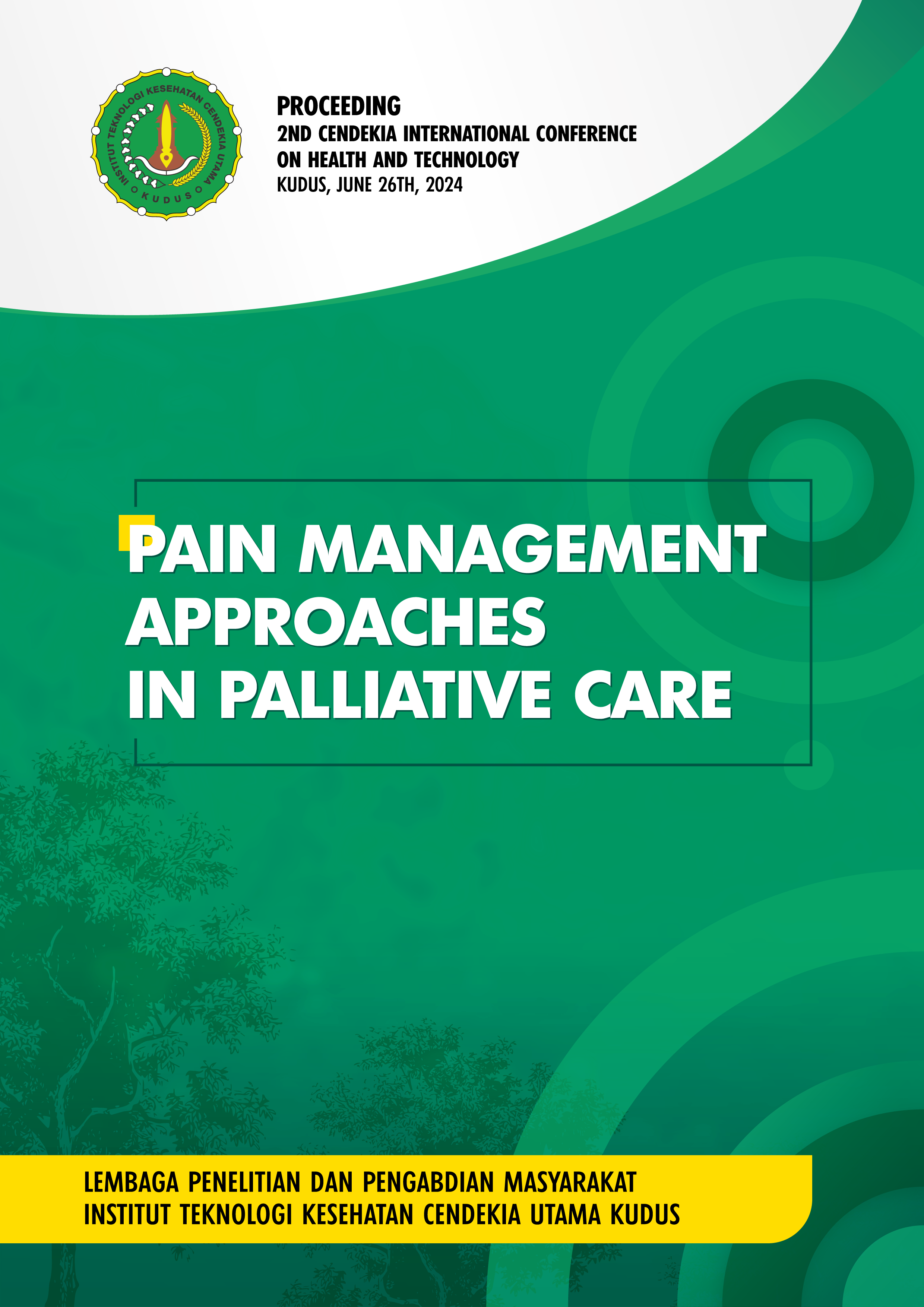The Effect of Implementing Prenatal Bounding Stimulation with Posters in Preventing High Risk Pregnancies
Main Article Content
Abstract
Human development begins before birth. The development of the baby is very dependent on the mother's loving response. Fetal stimulation is an effort made by parents in the form of stimulation of the fetus with the aim of improving the basic abilities of the fetus so that at birth it can grow and develop optimally. This type of research is a pre-experimental one group pretest-posttest design research. The results of the research on prenatal bounding stimulation with posters for the quality of attachment before being given the application were 41.6 and after being given the results were 47.2 and prenatal bounding stimulation for the intensity of preoccupation before being given the application was 28.6 and after being given the result was 31.7. The results obtained from the Wilcoxon test obtained a Z value of -5.477 and Asymp. Sig (2-tailed) 0.000 or the same as p-value < 0.05. The results of the bivariate analysis showed a Positive Rank or a positive difference between the pre-test and post-test of 30, meaning that as many as 30 pregnant women experienced an increase in prenatal bounding stimulation after being given the application. The mean rank or average increase in prenatal bounding stimulation is 15.5, while the number of positive ranks is 465. A Ties value of 9 means that the prenatal bounding stimulation score is the same between the pre-test and post-test. Conclusion: Prenatal bounding stimulation with posters has an effect on preventing high-risk pregnancies
Downloads
Article Details
References
Aprilia, W. (2020). Perkembangan Pada Masa Prenatal dan Kelahiran . Jurnal Pendidikan Anak Usia Dini .
Besse Darmita Yuana Putri, H. E. (2021). Pengaruh Promosi Kesehatan Tentang Bounding Attachment Berbasis Video Animasi Terhadap Pengetahuan Ibu. Nursing Care and Health Technology Journal.
Condon, J. T. (1993). The assessment of antenatal emotional attachment: development of aquestionnaire instrument. British Journal of Medical Psychology, 167–183.
Defi Yulita, M. Y. (2020). Faktor – Faktor yang Berhubungan dengan Pelaksanaan Stimulasi Janin dalam Kandungan. Jurnal Kesehatan Perintis (Perintis’s Health Journal), 65-70.
Deki, P. (2015). Factors Affecting Early Childhood Growth and Development : Golden 1000 Days. Journal of Advanced Practices in Nursing, 1-7.
Glasser, S. L. (2016). Primary care physicians’ attitudes toward postpartum depression: is it part of their job? Journal of PrimaryCare & Community Health, 24-29.
Güney, E. &. (2019). Effect of the fetal movement count on maternal–fetal attachment. Japan Journal of Nursing Science, 71-79.
Halimatussakdiah, I. F. (2015). Hubungan karakteristik ibu hamil dengan pengetahuan stimulasi kecerdasan pralahir di Puskesmas Kuta Alam. Jurnal Kesehatan , 8(2).
Harciare, I. P.-M. (2021). The Effect of Musical Stimulation and Mother’s Voice on theEarly Development of Musical Abilities: A Neuropsychological Perspective. International Journal of Environmental Research and Public Health, 1-17.
Herlina, N. (2017). Membentuk Kecerdasan Otak Janin Selama Kehamilan . Jurnal Sehat .
Hikmah, K. (2016 ). Analisis Faktor - faktor Risiko Keterlambatan Perkembangan Anak Balita Di Kabupaten Kudus . Jurnal Kebidanan , 1-6.
Lang.C. (2018). Attachment- penguatan attachment pada periode prenatal dan post natal.
Mahboubeh Valiani, S. H. (2021). The Effect Of Fetus Stimulation Techniques on Newborn Behavior . Journal Of Nursing and Midwifery Reseaarch .
Malm, M.-C. H. (2016). Prenatal attachmentand its association with foetal movement during pregnancy–A population based survey. Women and Birth, 482–486.
Mariani, M. W. (2020). Edukasi Prenatal Attachment Dapat Meningkatkan Kelekatan Ibu dan Janin Pada Ibu Hamil Risiko Tinggi . Jurnal Ilmiah Perawat Manado (Juiperdo), 44-61.
Marx, V. &. (2015). Fetal behavioural responses to maternal voice and touch. journal pone, 1-15.
Maziyatul, N. F. (2020). Perkembangan Kognitif, Fisik, Dan Emosi Sosial Pada Masa Prenatal. Jurnal Pendidikan Anak Usia Dini, 22-24.
Nuraina, T. S. (2021). Pengalaman Ibu Hamil Dalam Melakukan Stimulasi Pada Janin Di Praktik Mandiri Bidan (PMB) Sleman Yogyakarta. Yogyakarta : Program Studi Ilmu Kebidanan Program Magister Fakultas Ilmu Kesehatan Universitas Aisyah Yogyakarta .
Nurul Afdila Fannia, M. S. (2023). Pengaruh Edukasi Stimulasi Janin Menggunakan Media Video Terhadap Kedekatan Emosional Ibu dan Janin . Comserva Jurnal Penelitian dan Pengabdian Masyarakat , 1677-1684.
Pooja, P. &. (2017). Oxytocin : the Hormone of Love. Journal of Pharmacy and Biological Sciences, (12) 6 .
Suryana, D. (2016). Pendidikan anak usia dini : Stimulasi dan aspek perkembangan anak. Jakarta: Kencana.
Veryudha Eka P, L. W. (2019). Efektivitas Pendidikan Kesehatan Perkembangan Janin Dalam Meningkatkan Motivasi Ibu Hamil Untutk Memberikan Stimulasi System indra Janin Didesa Karang Sentul Kabupaten Pasuruan. Jurnal Midwiferia.

